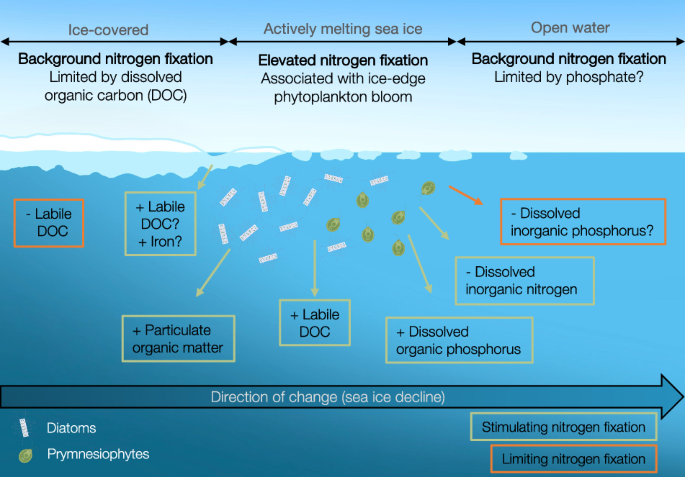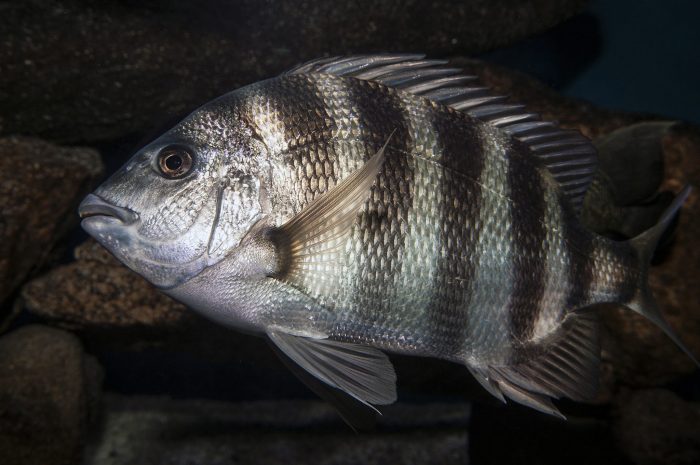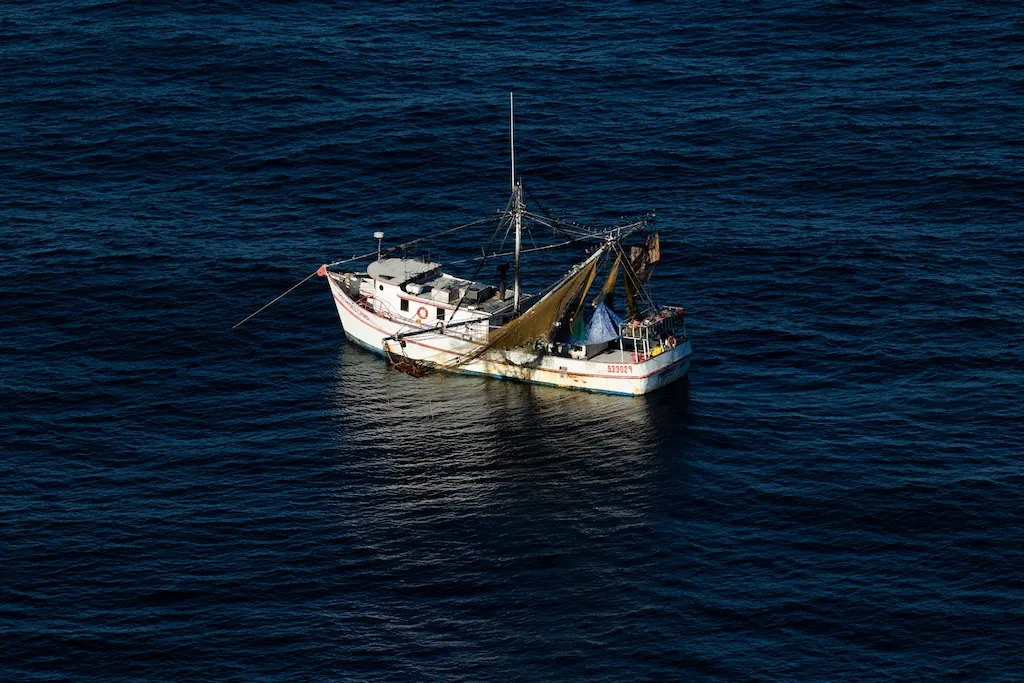Report on Nitrogen Fixation in the Arctic Ocean and its Implications for Sustainable Development Goals
Executive Summary
This report details findings on marine nitrogen fixation in the Central and Eurasian Arctic Ocean, highlighting its connection to climate change and its significance for achieving the Sustainable Development Goals (SDGs). Research indicates that the decline of Arctic sea ice, a direct consequence of global warming, is creating conditions conducive to nitrogen fixation by microorganisms. This process introduces new, bioavailable nitrogen into the marine ecosystem, supporting primary productivity. The findings are critically relevant to SDG 13 (Climate Action), as they document a key biogeochemical response to a warming climate, and SDG 14 (Life Below Water), by providing new insights into the nutrient cycles that underpin the health and productivity of marine ecosystems. The study identifies non-cyanobacterial diazotrophs (NCDs) as the primary agents of this process, linking their activity to organic matter derived from phytoplankton blooms at the ice edge.
Introduction: Climate Change and Marine Ecosystems in the Arctic
Context: The Arctic Under Threat (SDG 13 & SDG 14)
The Arctic is warming at a rate up to four times the global average, a critical challenge addressed by SDG 13 (Climate Action). This accelerated warming has led to a significant decline in sea ice coverage, age, and thickness. These changes profoundly impact the Arctic marine environment, altering light availability, water column stratification, and nutrient distribution. Such shifts directly affect marine biodiversity and ecosystem functions, which are central concerns of SDG 14 (Life Below Water).
The Role of Nitrogen in Primary Productivity (SDG 14 & SDG 2)
Primary productivity forms the base of the marine food web, supporting fisheries and contributing to global food security, a key aspect of SDG 2 (Zero Hunger). In the Arctic Ocean, productivity is often limited by the availability of nitrogen. Nitrogen fixation, the biological conversion of molecular nitrogen into bioavailable ammonium, represents a crucial source of new nitrogen that can alleviate this limitation. Understanding this process is essential for predicting the future productivity of the Arctic Ocean and its capacity to support marine life (SDG 14) and sequester carbon.
Study Findings: Nitrogen Fixation in a Changing Arctic
Regional Nitrogen Fixation Rates
Nitrogen fixation was detected across all studied sea ice regimes, confirming its presence in previously under-sampled ice-covered waters. The rates varied significantly by region and ice condition.
- Central Arctic Ocean (CAO): Rates ranged from 0.4 ± 0.1 to 2.5 ± 0.87 nmol N L−1 d−1, showing a positive correlation with primary production.
- Marginal Ice Zone (MIZ): Rates were highly variable, reaching up to 5.3 ± 3.65 nmol N L−1 d−1. The highest rates were associated with an ice-edge phytoplankton bloom.
Link to Sea Ice Decline and Primary Production (SDG 13 & SDG 14)
The study establishes a clear link between climate change-induced sea ice melt and nitrogen fixation, a process vital for marine ecosystem health (SDG 14).
- The highest rates of nitrogen fixation were observed in areas with actively melting sea ice (high-melt and pack ice zones) and decaying multiyear ice.
- In the CAO, nitrogen fixation was positively correlated with primary production, suggesting that organic matter released by phytoplankton fuels the process.
- In the MIZ, peak nitrogen fixation coincided with the development of an ice-edge phytoplankton bloom, which depleted inorganic nitrogen and created favorable conditions for diazotrophs.
Key Microbial Communities (Diazotrophs)
The research provides insight into the microorganisms responsible for Arctic nitrogen fixation, contributing to our understanding of marine biodiversity under SDG 14.
- The diazotroph community was dominated by non-cyanobacterial diazotrophs (NCDs), which are heterotrophic or mixotrophic organisms.
- Key NCD groups identified include Gamma-Arctic1, Gamma-Arctic2, and Beta-Arctic1.
- Expression of the nifH gene, a marker for nitrogen fixation, was detected from NCDs, confirming their activity in the region.
- Cyanobacterial diazotrophs, which are dominant in lower-latitude oceans, were rare or absent.
Analysis and Implications for Sustainable Development Goals
SDG 13: Climate Action
This research provides critical data on the biogeochemical feedbacks of the Arctic Ocean to climate change. By demonstrating that sea ice loss stimulates a new source of nitrogen, the study underscores the complex and cascading impacts of global warming. This information is vital for refining climate models to accurately predict future changes in polar ecosystems and the global carbon cycle, thereby informing effective climate action strategies.
SDG 14: Life Below Water
The findings directly advance our understanding of marine ecosystem function, a core objective of SDG 14. By identifying a previously underestimated source of new nitrogen, the study helps explain how Arctic marine ecosystems can sustain productivity in nutrient-poor conditions. This process influences the entire food web, from microbes to fish, and affects the biological carbon pump, which plays a role in sequestering atmospheric CO2. Conserving and sustainably using the oceans requires a comprehensive understanding of these fundamental biogeochemical cycles.
SDG 2: Zero Hunger
While an indirect link, the study’s implications are relevant to SDG 2. The primary production supported by nitrogen fixation forms the foundation of the marine food web. The health and productivity of this base layer ultimately determine the sustainability of Arctic fisheries, which are a source of food and economic security for communities. Understanding how climate change will alter this foundational productivity is essential for long-term sustainable management of marine food resources.
Conclusion and Future Outlook
This study confirms that nitrogen fixation is an active and important process in the ice-covered waters of the Eurasian Arctic, driven by conditions created by climate change. The process is closely linked to primary production and is carried out by a distinct community of non-cyanobacterial diazotrophs. As Arctic sea ice continues to decline (SDG 13), the role of nitrogen fixation in shaping the region’s biogeochemistry and supporting marine life (SDG 14) is expected to grow. It is imperative that future ecosystem and climate models incorporate these findings to improve predictions of Arctic productivity, carbon cycling, and the overall health of the marine environment, thereby supporting global efforts to achieve sustainable development.
Analysis of the Article in Relation to Sustainable Development Goals
1. Which SDGs are addressed or connected to the issues highlighted in the article?
SDG 13: Climate Action
The article is fundamentally framed by the impacts of climate change on the Arctic. It explicitly states that its research is motivated by “climate change-induced sea ice decline in the Arctic Ocean.” The introduction further elaborates on this connection by highlighting that “The Arctic is warming at rates up to four times faster than the global average, which has caused major declines in sea ice coverage, age, and thickness.” This directly links the study’s context and scientific questions to the urgent need to understand and combat climate change and its impacts, which is the core of SDG 13.
SDG 14: Life Below Water
The study’s primary focus is on the marine ecosystem of the Arctic Ocean. It investigates key biogeochemical processes, such as “nitrogen fixation” and “primary productivity,” and their role in the marine food web. The article analyzes how changes in the physical environment (sea ice decline) affect “the biological productivity of the water column,” including “phytoplankton blooms.” This research contributes directly to understanding the health, productivity, and resilience of a critical marine ecosystem, aligning perfectly with the goal of conserving and sustainably using the oceans, seas, and marine resources for sustainable development.
SDG 17: Partnerships for the Goals
The research presented in the article is a product of significant international and inter-institutional collaboration. The “Methods” section details that the study is based on two different scientific cruises (“IB Oden during the Swedish Synoptic Arctic Survey (SAS) expedition” and “RV Polarstern during the PS131 expedition (ATWAICE)”). The “Acknowledgements” section further lists a wide range of supporting institutions from different countries, including the Swedish Polar Research Secretariat, the University of Copenhagen, the Alfred Wegener Institute (Germany), and funding from French and UK bodies. This collaborative effort to generate critical scientific knowledge exemplifies the spirit of SDG 17, which emphasizes the need for global partnerships to achieve sustainable development.
2. What specific targets under those SDGs can be identified based on the article’s content?
Targets under SDG 13 (Climate Action)
- Target 13.1: Strengthen resilience and adaptive capacity to climate-related hazards and natural disasters in all countries. The article contributes to this target by providing foundational knowledge about how the Arctic marine ecosystem is responding to climate-related hazards like rapid warming and ice melt. Understanding these responses is the first step toward developing strategies to strengthen the resilience of these ecosystems.
- Target 13.3: Improve education, awareness-raising and human and institutional capacity on climate change mitigation, adaptation, impact reduction and early warning. This scientific paper is a direct contribution to the body of knowledge on climate change impacts. By publishing and disseminating these findings, the authors improve the institutional capacity of the scientific community and policymakers to understand and address the specific consequences of climate change in the polar regions.
Targets under SDG 14 (Life Below Water)
- Target 14.1: By 2025, prevent and significantly reduce marine pollution of all kinds, in particular from land-based activities, including marine debris and nutrient pollution. The article’s detailed investigation of the nitrogen cycle, including measurements of “nitrate (NO3−)”, “ammonium (NH4+)”, and “nitrogen to phosphorus (N:P) molar ratios,” provides critical data on nutrient dynamics. This information is essential for establishing baselines and understanding the processes that could be affected by or contribute to nutrient pollution in the future.
- Target 14.2: By 2020, sustainably manage and protect marine and coastal ecosystems to avoid significant adverse impacts, including by strengthening their resilience, and take action for their restoration in order to achieve healthy and productive oceans. The study directly assesses the health and productivity of the Arctic Ocean by measuring “primary production” and observing the development of an “ice-edge phytoplankton bloom.” It provides insight into how the ecosystem functions under the stress of declining sea ice, which is crucial for managing and protecting this vulnerable marine environment.
- Target 14.a: Increase scientific knowledge, develop research capacity and transfer marine technology… in order to improve ocean health and to enhance the contribution of marine biodiversity to the development of developing countries. The entire article is an embodiment of this target. It presents new scientific knowledge (“we report nitrogen fixation rates, diazotroph composition, and expression under different stages of declining sea ice”) and utilizes advanced methods (“stable-isotope tracing,” “amplification of the diazotroph marker gene nifH”) to improve the understanding of ocean health in a rapidly changing region.
Targets under SDG 17 (Partnerships for the Goals)
- Target 17.6: Enhance North-South, South-South and triangular regional and international cooperation on and access to science, technology and innovation. The research was conducted through a collaboration of scientists and institutions from Sweden, Denmark, Germany, France, and the UK, as detailed in the affiliations and acknowledgements. This international scientific cooperation on a shared global challenge is a clear example of this target in action.
3. Are there any indicators mentioned or implied in the article that can be used to measure progress towards the identified targets?
Indicators for SDG 13 (Climate Action)
- Indicators for Target 13.1: The article provides qualitative and quantitative data on the impacts of climate change that serve as indicators of climate-related hazards. These include:
- Rate of regional warming: “The Arctic is warming at rates up to four times faster than the global average.”
- Changes in the cryosphere: “major declines in sea ice coverage, age, and thickness.”
Indicators for SDG 14 (Life Below Water)
- Indicators for Target 14.1: The study measures several parameters that are direct inputs for assessing nutrient levels in the ocean, relevant to Indicator 14.1.1 (Index of coastal eutrophication). These include:
- Concentrations of dissolved inorganic nutrients: “nitrate (NO3−) concentrations,” “phosphate (PO43−),” and “ammonium (NH4+).”
- Nutrient ratios: “nitrogen to phosphorus (N:P) molar ratios.”
- Indicators for Target 14.2: The article uses standard oceanographic metrics to assess ecosystem health and productivity. These serve as practical indicators for the state of the marine ecosystem:
- Ocean primary productivity: “Primary production rates (13C-tracing)” were measured, with results showing an increase “an order of magnitude between the first and second transect” in the MIZ.
- Phytoplankton biomass: “chlorophyll a” concentrations were measured, reaching up to “9.0 μg L−1” during a bloom.
- Indicators for Target 14.a: The existence and public availability of the research itself is an indicator of progress.
- Scientific output: The publication of this peer-reviewed article contributes to the global scientific knowledge base.
- Data sharing: The “Data availability” section explicitly states that the data are “openly available in PANGAEA” and the “NCBI Sequence Read Archive,” which is a direct measure of increasing access to scientific information.
4. Table of SDGs, Targets, and Indicators
| SDGs | Targets | Indicators Identified in the Article |
|---|---|---|
| SDG 13: Climate Action | 13.1: Strengthen resilience and adaptive capacity to climate-related hazards. |
|
| SDG 14: Life Below Water | 14.1: Prevent and significantly reduce marine pollution, including nutrient pollution. |
|
| 14.2: Sustainably manage and protect marine and coastal ecosystems. |
|
|
| 14.a: Increase scientific knowledge and develop research capacity. |
|
|
| SDG 17: Partnerships for the Goals | 17.6: Enhance international cooperation on and access to science, technology and innovation. |
|
Source: nature.com







